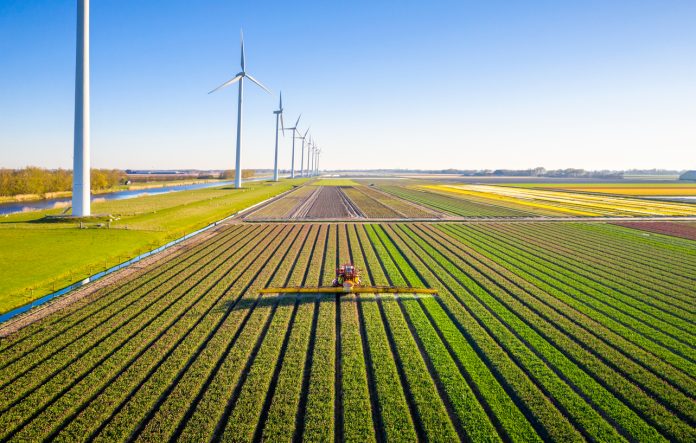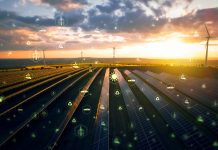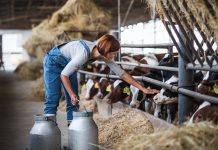Aarthi Janakiraman, Research Director of the Advanced SciTech Division at Everest Group, thoroughly examines the role of AI in sustainable agriculture
When examining the role of AI in sustainable agriculture, we first need to consider that soil health is an integral part of sustainable agriculture, and its role in ensuring food security is undeniable.
Indeed, a healthy soil ecosystem fosters biodiversity, ensures robust crop growth and yield, and maintains soil-water nexus. However, the rising population and the need to ensure food security for all walks of life have significantly strained the agriculture industry, adversely impacting the soil ecosystem. Around 33% of the world’s soil is degraded, and soil has lost its organic carbon due to land-use conversion from native ecosystems; this has impacted productivity and the soil ecosystem’s health.
Degradation of soil health, in turn, warrants the use of higher amounts of crop aids, most of them derived from synthetic sources, which again degrades soil health, leading to a vicious cycle. The connection between soil and human health is also undeniable. Soil degradation leads to poor nutritional value in crops and negative health outcomes.
The role of a good soil ecosystem in mitigating climate change is also undeniable. Healthy soil sequesters carbon dioxide and reduces greenhouse gas emissions. The FAO estimates that sustainable soil management practices can help reduce carbon emissions by up to 1.5 billion tonnes annually.
For agriculture practices to be sustainable, they must be economically viable, self-sustaining, productive, conserve natural resources, and preserve ecological diversity.
Integrating technologies into soil management practices is needed to ensure sustainability in agricultural systems. Technological developments help continuously monitor and optimise resource use and promote agricultural productivity and environmental resilience.
Rising influence of AI in sustainable agriculture
AI is emerging as a transformative tool for monitoring and improving soil health and helping stakeholders improve productivity through tailored recommendations and early intervention. AI facilitates a more detailed understanding of soil conditions and their interlinkages with other environmental factors that can promote sustainability. AI platforms integrated with machine learning, remote sensing, and data analytics can provide a comprehensive overview of soil health and conditions and facilitate data-driven decision-making for sustainable land use and effective soil health management.
Integrating AI with remote sensing using satellite imagery and drones with sensors captures real-time data on soil conditions and other environmental parameters. AI algorithms can process the data to forecast trends and identify patterns and anomalies. Companies like Planet Labs, U.S., successfully use satellite imagery and machine learning to predict in-field patterns and region-specific trends that make agricultural planning easier, quantify productivity across regions, and develop targeted management zones.
Another area where AI is being increasingly used is for soil testing and analysis to identify nutrient deficiencies and recommend specific amendments. One example is the technology platform SoilOptix®, which uses AI to analyse soil samples and properties and develop targeted intervention and management protocols.
AI-driven predictive analytics can forecast soil health trends based on historical data and environmental variables. It allows farmers to tailor their activities to specific soil conditions, maximising efficiency and yield. It can provide personalised recommendations for cover crops, crop rotation, and soil and pest management. Wageningen University & Research in the Netherlands is developing machine learning models to predict nutrient depletion and soil erosion. These models help farmers anticipate soil health issues and implement proactive management strategies.
Another exciting use of AI systems is their ability to integrate various data sources to provide in-depth insights into soil health, considering historical and current data and environmental variables and forecasting future parameters. With operations across several European countries, CropX and Taranis utilise AI algorithms to optimise irrigation and fertilisation, promoting efficient resource use and providing farmers with insights into soil health, pest management, and crop performance.
The National Institute of Food and Agriculture, USDA is deploying AI for soil monitoring and to predict how soil will respond to various agricultural practices over time, which can design long-term sustainable practices Rothamsted Research, UK, and the European Commission’s Joint Research Centre are investigating how AI can improve soil health and sustainable farming and land management practices across the UK and Europe.
Industrial stakeholders are actively engaged in research and development and deployment of AI technologies in agriculture. However, government support is vital for successfully implementing AI technologies in soil health management at a large scale. Realising the potential of AI, several European countries and the UK actively promote research and AI in agricultural practices through various initiatives.
The EU’s Horizon 2020 programme funds various projects focused on smart farming. Projects like SmartAgriFood established the need to integrate AI for improved soil management and sustainable agricultural practices across the Member States. The AI4Soil Health project under the EU’s Soil Health Mission for 2030 aims to create and maintain an open-access Europe-wide digital infrastructure that can deeply understand soil health and measures needed without laboratories. The ambitious project aims to create a “Soil Digital Twin” using AI-based data infrastructure.
The project intends to develop a coherent Soil Health Index methodology, a rapid soil health assessment toolbox, a soil health/ degradation monitor, and an AI4SoilHealth API and mobile phone app that can help farmers make fundamental and long-term changes in their agricultural practices.
Countries like Germany and France, through efforts such as the Digital Agricultural Strategy and Agricultural Digital Revolution, respectively, support projects incorporating AI technologies for soil health monitoring, sustainable farming practices and management, and optimising resource use. The Netherlands is pioneering research in soil health and AI to evaluate soil health indicators and develop sustainable agricultural practices.
AI in sustainable agriculture challenges
Despite the potential benefits, several challenges hinder the widespread adoption of AI technologies for soil health monitoring and improvement. AI models require large amounts of high-quality data that is sparse or outdated to function effectively; this limits their effectiveness and emphasises the need to invest in soil data collection initiatives. Many small-scale farmers may lack the technical skills or resources to implement AI technologies successfully. Another key challenge is the high cost of deploying sensors and integrated software platforms.
Developing open data platforms where farmers, researchers, and other stakeholders can share soil data can enhance the quality and availability of information. Training programmes are needed to enable farmers and other stakeholders to utilise AI technologies effectively. Developing cost-effective sensors and open-access platforms can help manage costs and increase the use of AI and other digital technologies.
Despite all the efforts, agricultural activities are still undervalued and underappreciated in various societies, which directly translates to a lack of continuous availability of resources, funding, and investment support. While the situation is gradually changing due to increasing awareness about climate change and the role of sustainable agriculture in its mitigation, it is far from optimal. To reap long-term benefits, it is important to drive the importance of sustainable agriculture and the role of technologies in realising it to reap long-term benefits.
To conclude, integrating technologies such as AI into soil health management allows for sustainable agriculture and better environmental stewardship. Through real-time monitoring, predictive analytics, and precision and predictive techniques, farmers can optimise their operations while maintaining soil health and biodiversity. As AI technologies evolve, their potential to redefine soil health management will increase. However, for successful long-term deployment, collaboration among farmers, researchers, and policymakers is essential to establishing a sustainable agricultural future.
To discuss this topic more in-depth and speak to our analysts, please get in touch with Aarthi Janakiraman (aarthi.janakiraman@everestgrp.com), Research Director, Advanced SciTech, Everest Group.
References
- Amelung, W., Bossio, D., de Vries, W. et al. Towards a global-scale soil climate
mitigation strategy. Nat Commun 11, 5427 (2020).
https://doi.org/10.1038/s41467-020-18887-7 - Hannam, I. (2024). Sustainable Soil Management and Soil Carbon
Sequestration. In: Ginzky, H., et al. International Yearbook of Soil Law and
Policy 2022. International Yearbook of Soil Law and Policy, vol 2022. Springer,
Cham. https://doi.org/10.1007/978-3-031-40609-6_1 - Awais, Muhammad & Naqvi, Syed Muhammad & Zhang, Hao & Li, Linze &
Zhang, Wei & Awwad, Fuad & Ismail, Emad & Khan, M. & Raghavan, Vijaya &
hu, Jiandong. (2023). AI and machine learning for soil analysis: an assessment
of sustainable agricultural practices. Bioresources and Bioprocessing.
https://doi.org/10.1186/s40643-023-00710-y - Chen, Q., Li, L., Chong, C., & Wang, X. (2022). AI-enhanced soil management
and smart farming. Soil Use and Management, 38, 7–13.
https://doi.org/10.1111/sum.12771 - B7 – 1 Sustainable soil and land management and climate change | Climate
Smart Agriculture Sourcebook | Food and Agriculture Organization of the
United Nations https://www.fao.org/climate-smart-agriculture-sourcebook/
production-resources/module-b7-soil/chapter-b7-1/en/. - The State of Food Security and Nutrition in the World 2023 https://
openknowledge.fao.org/items/445c9d27-b396-4126-96c9-50b335364d01. - Home – AI4SoilHealth https://ai4soilhealth.eu/











